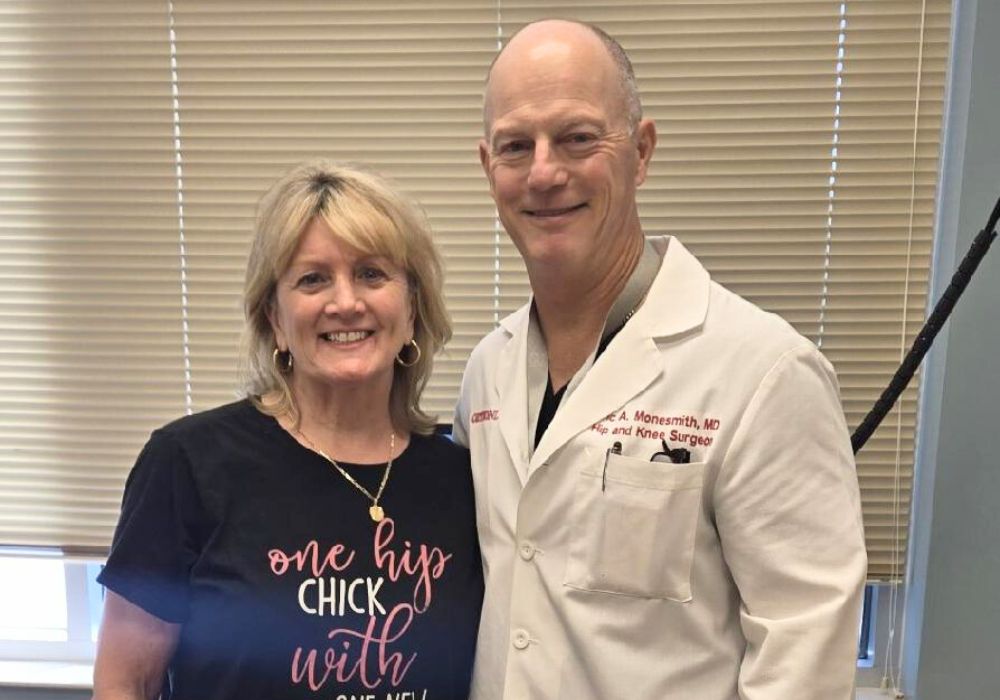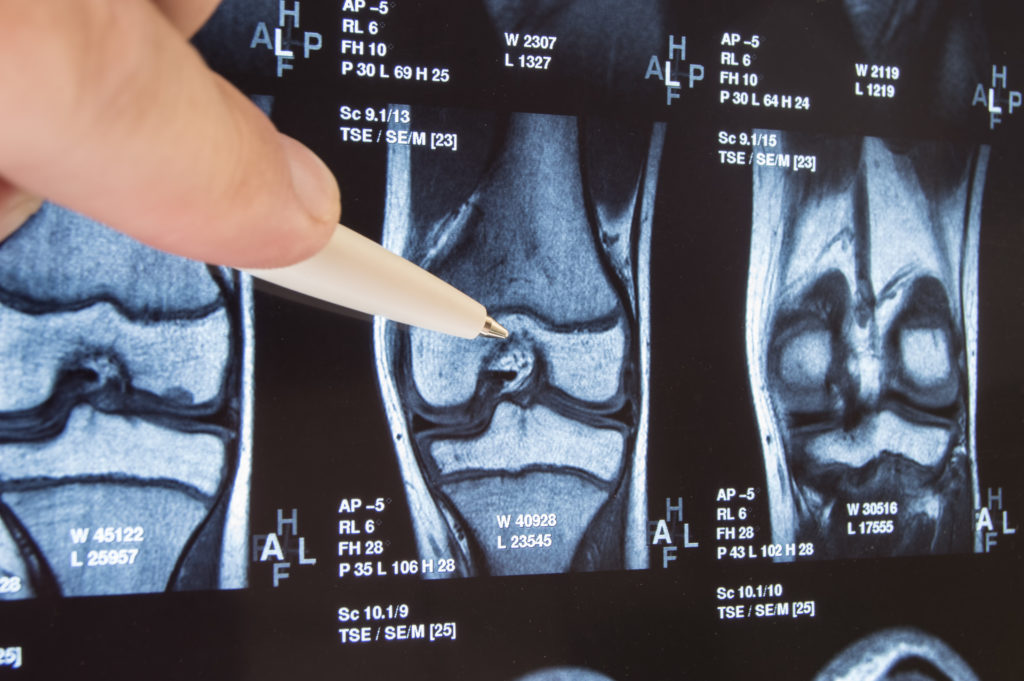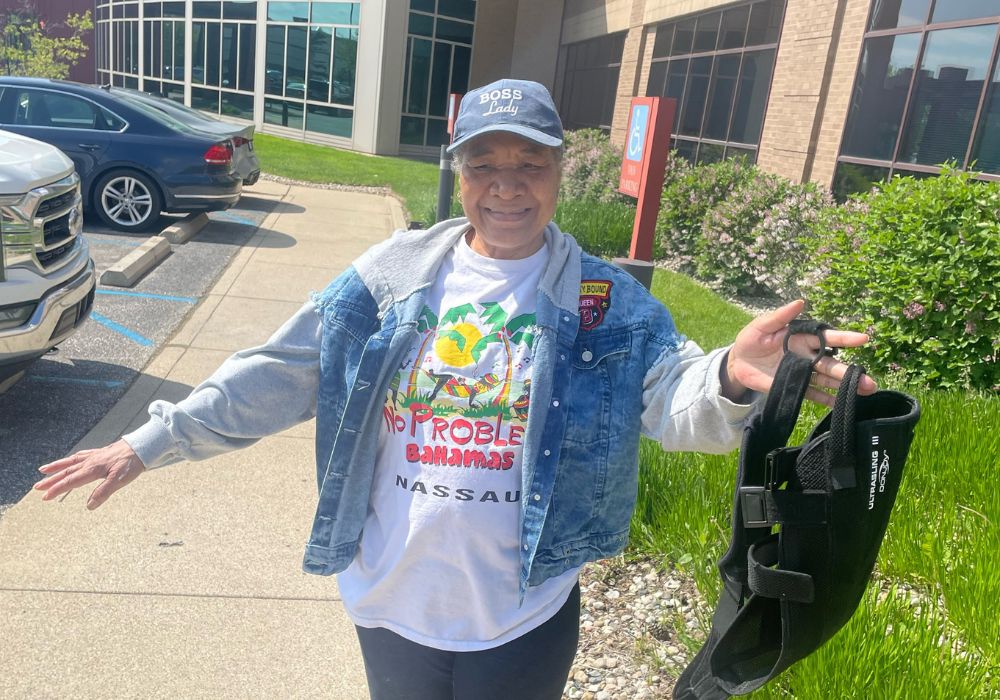This post is part of The Ultimate Guide to Total Knee Replacement and The Ultimate Guide to Total Hip Replacement
Arthritis refers to joint pain or joint disease. There are more than 100 different types of arthritis, and it can affect people of all ages, sexes and races.
More than 50 million adults and 300,000 children have some type of arthritis. Arthritis in the knee or hip is especially common and can be extremely painful.
Symptoms of hip and knee arthritis:
- Swelling
- Pain
- Stiffness
- Decreased range of motion
Hip and knee arthritis symptoms can vary from mild to severe. Severe arthritis symptoms can result in chronic pain and cause permanent joint damage.
“Arthritis causes wear of the cartilage and bone, which results in inflammation of the affected joint,” says Dr. David Fisher, a total joint specialist at OrthoIndy. “The bone, cartilage and joint lining all have nerve endings that can transmit pain signals to the brain when stimulated. The pain and inflammation may vary from day-to-day and week-to-week, which is why patients have variable amounts of discomfort.”
Types of arthritis in the hip or knee
Degenerative osteoarthritis
Degenerative osteoarthritis is the most common form of arthritis in the knee or hip.
It is a degenerative wear and tear type of arthritis where the cartilage in the joint gradually wears away over time. This causes bone rubbing on bone and can produce bone spurs.
Osteoarthritis develops slowly, and the pain increases over time.
Rheumatoid arthritis
Rheumatoid arthritis is a chronic disease that attacks multiple joints throughout the body. It can affect the same joint on both sides of the body.
The synovial membrane that covers the joint begins to swell, which results in joint pain and stiffness.
Rheumatoid arthritis is an autoimmune disease, which means the immune system attacks the body’s own tissues and damages the cartilage and ligaments while softening the bone.
Post-traumatic arthritis
Post-traumatic arthritis is a form of knee or hip arthritis that develops after an injury to the knee or hip.
These injuries can cause instability and additional wear of the joint, which can lead to arthritis.
Treatment for knee and hip arthritis symptoms
Although researchers haven’t found a cure yet for arthritis in the hip or knee, there are a number of treatment options to soothe pain and decrease inflammation.
Nonsurgical treatment options
- Activity minimization
Switch from high impact activity to low impact activity. - Weight loss
- Physical therapy
- Assistive devices
If you’re suffering, canes and shoe inserts might provide some relief. - Medications
Non-steroidal anti-inflammatories, also known as NSAIDs, can help relieve arthritis-related pain and inflammation. - Corticosteroid (cortisone) injections
- Platelet-rich plasma injections
- Orthobiologic therapies
DOWNLOAD THE ULTIMATE GUIDE FOR ORTHOBIOLOGICS
If nonsurgical treatment options for hip and knee arthritis symptoms fail to provide pain relief, a total joint specialist may recommend joint replacement.
Benefits and risks of joint replacement
For every orthopedic doctor, surgery is always the last option once more conservative pain treatments have been explored.
Every year more than one million Americans choose to have their knee or hip joint replaced. The immediate benefits are less pain and more mobility.
As with any surgery, there are risks involved with total joint replacement surgery, including the risk of heart attack, infection, bleeding, injury to nerves or loosening of the new joint over time.
Almost 95 percent of hip replacements last 15 to 20 years, and 85 percent of knee replacements last 20 years.
Patients with previous knee and hip arthritis symptoms are less likely to be at risk for heart failure, depression and diabetes after total joint replacement surgery.
“Replacing a worn-out joint with an artificial joint removes the painful bone and cartilage and the source of irritation to the lining of the joint,” says Dr. Fisher. “You can regain function and stability by re-aligning and balancing the remaining joint structures and restore quality of life by eliminating the pain and improving the function of the involved joint.”
Learn more about joint replacement surgery at OrthoIndy.

Schedule an appointment
Your well-being is important to us. Click the button below or call us to schedule an appointment with one of our orthopedic specialists. If your injury or condition is recent, you can walk right into one of our OrthoIndy Urgent Care locations for immediate care. For rehabilitation and physical therapy, no referral is needed to see one of our physical therapists.





